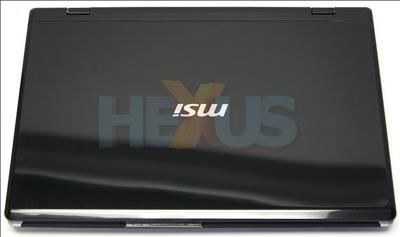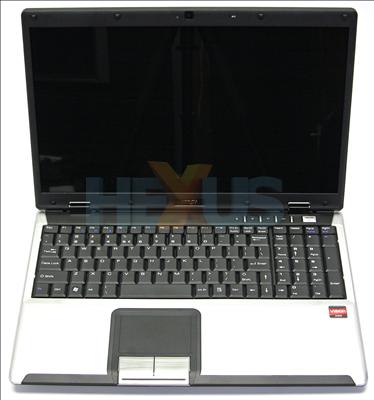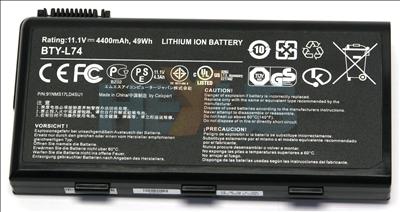The Tigris
MSI will be one of the first to market with a Tigris-powered notebook, and we got our hands on an engineering-sample model.The Tigris platform is primarily designed for notebooks featuring 14in-plus screens. The Classic Series CR610 packs in a 16in WXGA LED-backlit panel with a native resolution of 1,366x768, presented in a 16:9 aspect ratio - good for watching movies.
MSI is going to release a number of SKUs based on this model, differentiated by CPU (Athlon II, Turion II Ultra), RAM (2/4GB), hard-drive size (250/320/500GB), and optical-drive format (DVD ReWriter/Blu-ray). The base model should cost below £400, and the high-end Blu-ray totin' SKU around £550.
Build quality is reasonable for a mid-priced laptop. There are no squeaks or rattles on the sample machine provided by MSI on behalf of AMD.
Tipping the scales at 2.48kg, the CR610 can be considered light for laptop in its class, especially as it ships with an optical drive as standard.
45nm Phenom-derived CPUs

The higher-specified Turion II chips increase performance by adding a 128-bit FPU and raising the HT speed to 3.6GT/s, and the Turion II Ultras are further distinguished by the doubling of L2 cache, to 2MB. Clock speeds will range from 2.0GHz to 2.6GHz, but all draw up to 35W when under load.
AMD's moved the technology on from Athlon (K8) to Phenom (K10) with the Caspian chips, but like the Regor-based desktop CPUs, they don't feature an L3 cache, limiting performance yet saving power.
Ports and sockets
An eSATA/USB combination port; HDMI; VGA; ExpressCard34; Gigabit Ethernet, and a further two USB ports line the laptop's sides. Wired connectivity, then, is good.
Wireless communication is provided by a 1T1R 802.11b/g/n WiFi card but, understandably, MSI leaves Bluetooth on this budget-oriented model that will etail for around £450.
The integrated graphics, Mobility Radeon HD 4200, almost identical to the MR HD 3200, will be able to play basic games at low-ish resolutions. The UVD2 part of the IGP enables GPU-based decoding of high-definition content - primed for Blu-ray. The sample, however, shipped with a DVD ReWriter from Optiarc.
Kitted out with 4GB DDR2 RAM, a 320GB hard drive, 802.11b/g/n WiFi and Windows Home 7 Premium, the overall specification, on paper at least, is reasonable for the ~£450 etail price.
Usage
The laptop's surprisingly muted when in use; the fans don't spin up much even when gaming. MSI's engineers have a larger-than-normal chassis to work with, giving them the opportunity to use larger heatpipes than for, say, 12in models.
An obvious benefit of a larger-screen notebook is with the provision of a separate number-pad. The keys are responsive and have a decent degree of travel, and, taking away some of the keyboard shortcuts, MSI includes four buttons for accessing commonly used apps.
As standard, the CR610 will ship with a six-cell, 49Whr battery. Our concern is that, based on previous experiences with Puma, battery-life may not be long enough to run an entire Blu-ray film from start to finish.















